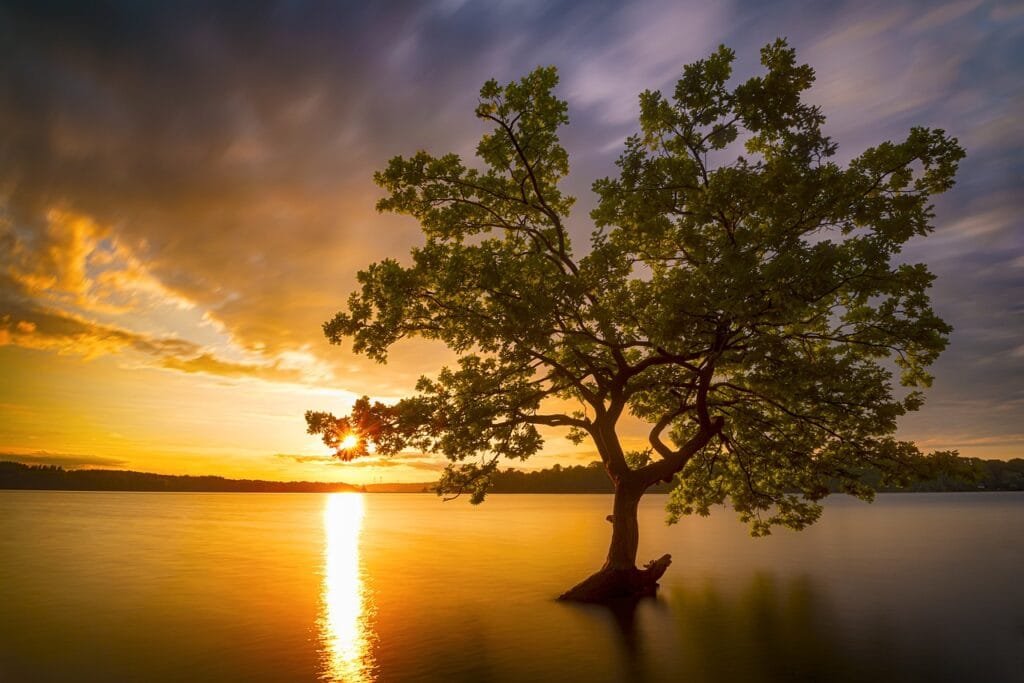This report examines how planting and nurturing trees in backyards contribute to combating climate change. It highlights the environmental, economic, and social benefits of trees, supported by statistics and scientific evidence. It also provides actionable strategies for homeowners to maximize the climate-positive impact of their green spaces.
Climate Change and the Role of Backyard Trees
Climate change poses one of the most significant challenges to humanity, with rising global temperatures, extreme weather events, and shrinking biodiversity. While large-scale reforestation initiatives are crucial, individual efforts, such as planting trees in backyards, can have a surprisingly substantial impact. This report explores the role of backyard trees in mitigating climate change and provides data-backed insights for effective action.
The Environmental Impact of Backyard Trees
Carbon Sequestration
Trees absorb carbon dioxide (CO₂) from the atmosphere and store it as biomass. According to the U.S. Department of Agriculture, a single mature tree can absorb approximately 48 pounds of CO₂ per year. Over a 40-year lifespan, one backyard tree can offset around one ton of CO₂, equivalent to a car driving 2,500 miles.
Reducing the Urban Heat Island Effect
Tree canopies lower ambient temperatures by providing shade and releasing water vapor through transpiration. Studies show urban areas with significant tree coverage can be 2–9°F cooler than areas without trees. Reduced heat lowers reliance on air conditioning, cutting energy consumption and greenhouse gas emissions.
Supporting Soil Health
Tree roots improve soil structure and prevent erosion. Healthy soils act as carbon sinks, storing 2–3 times more carbon than the atmosphere. Backyard trees also reduce runoff, preventing pollutants from entering waterways and contributing to ocean acidification.
Economic and Social Benefits
Energy Savings
Strategically planted trees around homes can reduce cooling costs by 20–50%, according to the U.S. Department of Energy. Shaded homes consume less energy, indirectly reducing fossil fuel emissions.
Property Value and Community Impact
Trees increase property values by 7–19%, as reported by the Arbor Day Foundation. Green neighborhoods experience higher social cohesion, reduced crime rates, and better mental health among residents.
Biodiversity and Pollination
Backyard trees support ecosystems by providing habitats for birds, insects, and mammals. Native trees, in particular, sustain pollinator species crucial for agriculture and food security.
Strategies for Maximizing Impact
Choosing the Right Tree
- Native species are better adapted to local climates and ecosystems. For example, oaks can support over 500 species of caterpillars, compared to fewer than 10 for some non-native trees.
- Select fast-growing, long-lived species to maximize carbon sequestration.


Proper Planting and Care
- Position trees strategically to provide shade to south- and west-facing walls of homes.
- Water young trees regularly until established, then rely on natural rainfall to minimize water usage.
- Mulch and prune trees to ensure healthy growth and reduce pest infestations.
Engaging the Community
- Organize neighborhood tree-planting events to amplify impact.
- Advocate for local policies supporting urban greening initiatives and the preservation of existing trees.
Challenges and Solutions
Limited Space
- Use dwarf or columnar tree varieties for smaller yards.
- Consider container planting for patios or balconies.
Initial Costs
- Encourage participation in tree-planting programs that provide free or subsidized trees, such as the Arbor Day Foundation’s initiatives.
- Highlight long-term savings on energy bills and increased property value as financial incentives.
Maintenance
- Provide education on tree care to homeowners to ensure long-term survival and effectiveness.
- Promote professional arborist services for complex tasks like pruning and pest management.
Statistical Overview
- A 10% increase in urban tree cover can reduce city temperatures by 3–4°F.
- Trees in the U.S. collectively sequester approximately 800 million tons of CO₂ annually, valued at $50 billion in climate benefits.
- A study by the Nature Conservancy found that planting 20% more trees in urban areas could reduce air pollution-related deaths by up to 40%.
Backyard trees are more than aesthetic additions; they are vital tools in the fight against climate change. By sequestering carbon, reducing heat, and supporting biodiversity, they offer tangible environmental benefits. Homeowners have a unique opportunity to make a difference, one tree at a time. With strategic planting, proper care, and community engagement, backyard trees can help build a greener, cooler, and more sustainable future.
References
- Sustainable Sort. (2025). Planting Solutions: How Your Backyard Trees Can Save the Planet.
- Earth Guardians Online. (2025). How Does Deforestation Affect the Carbon Cycle?.
- U.S. Department of Agriculture. (2023). Carbon Sequestration in Urban Trees.
- The Nature Conservancy. (2022). Urban Forests: A Natural Climate Solution.
- Arbor Day Foundation. (2023). Benefits of Trees in Urban Landscapes.
- Energy.gov. (2023). Energy Savings Through Tree Planting.

